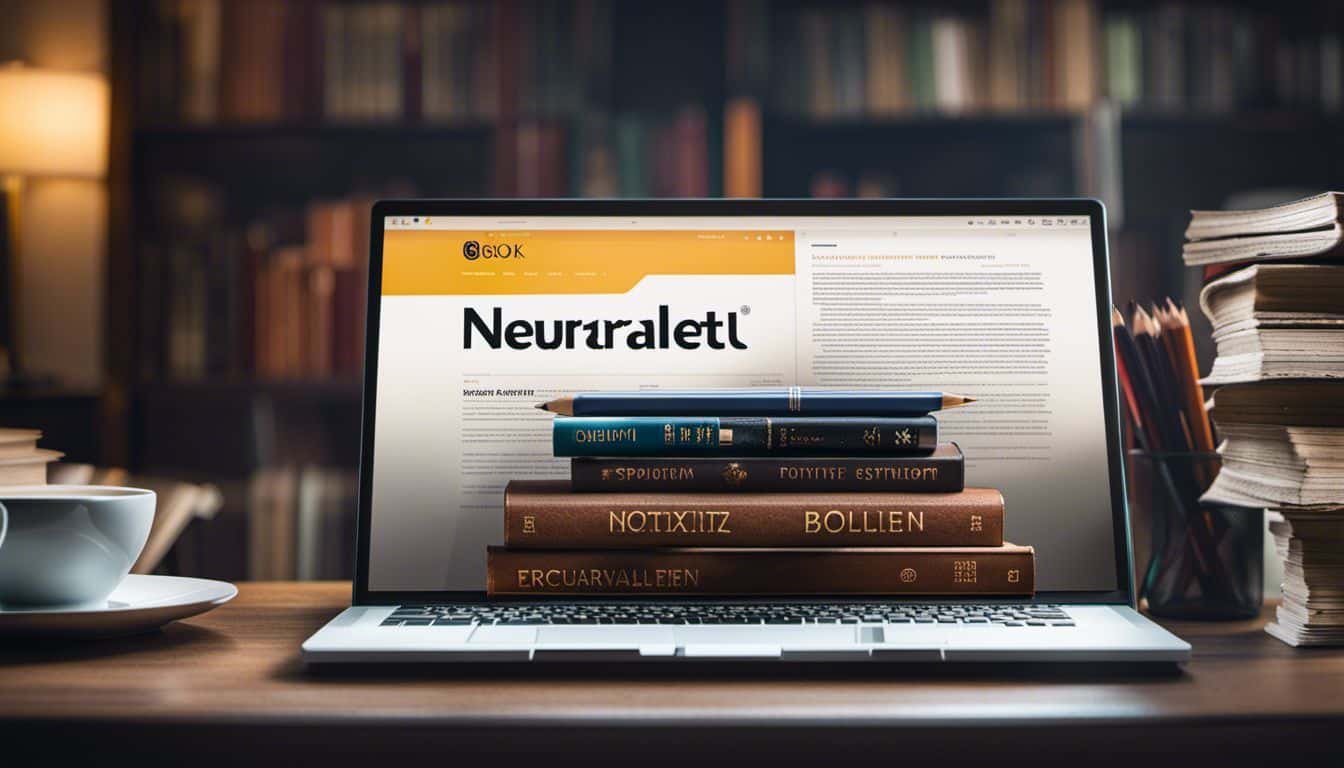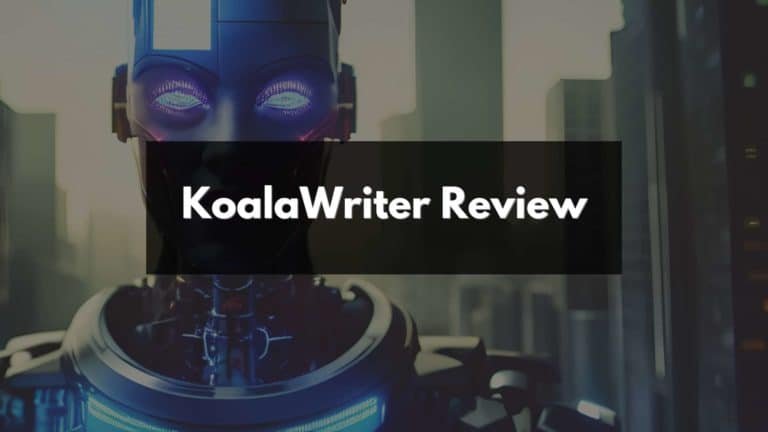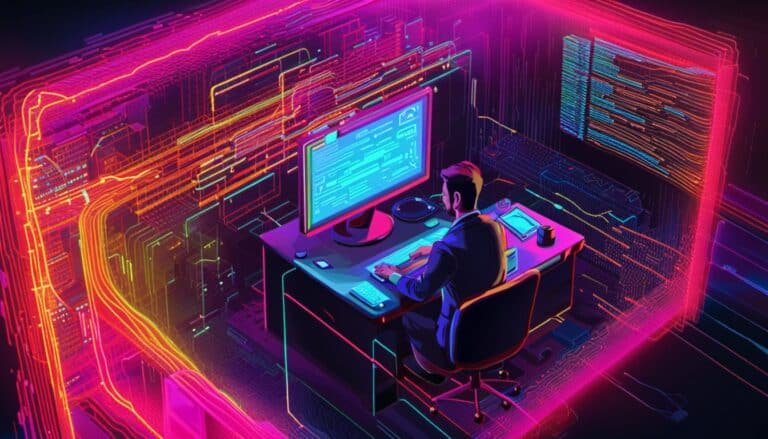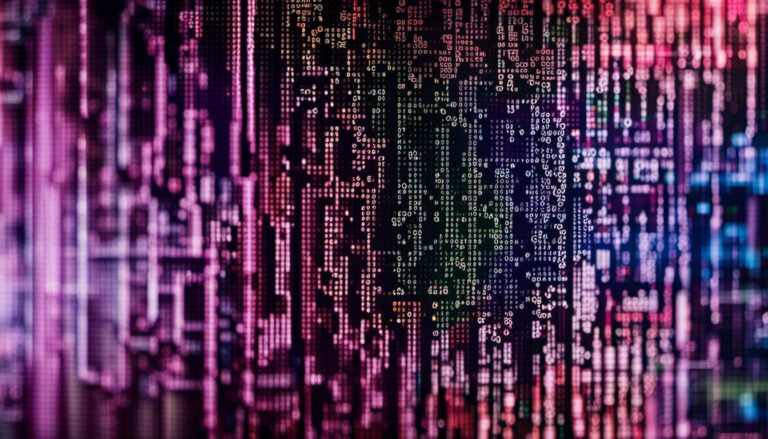Can NeuralText Pass Turnitin Detection?
Are you searching for an AI content creator that can outsmart Turnitin’s detection system? I get it, I’ve been there too. After delving deep into the capabilities of NeuralText and Turnitin’s advanced AI detection, one fact stood clear: Turnitin has released its AI writing detection designed to identify content written by even sophisticated AIs.
In this article, we’ll explore just how effective NeuralText can be against such technology and share tips on bypassing plagiarism checks without compromising integrity. Ready to decode this AI mystery?.
Key Takeaways
- Turnitin’s AI detection system is designed to identify plagiarism in text written by artificial intelligence, including content generated by tools like NeuralText.
- While NeuralText claims to produce undetectable writing outputs, relying solely on AI-generated content without understanding its limitations may still risk exposure to Turnitin’s vigilant technology.
- To pass Turnitin AI detection and avoid plagiarism, it is crucial to use reliable sources, properly cite and reference original authors, employ paraphrasing techniques, understand fair use guidelines, and thoroughly proofread and edit your work.
How Turnitin AI Detection Works
Turnitin AI Detection works by analyzing text and comparing it to a vast database of published sources, student papers, and internet content.
Understanding the need to pass Turnitin AI Detection and avoid plagiarism
Turnitin’s AI detection capabilities have set a new standard to identify plagiarism in text written by artificial intelligence. Ensuring your content passes this sophisticated system not only proves its originality but also maintains the integrity of your work, distinguishing it from copied material.
While Turnitin demonstrates impressive accuracy in catching ChatGPT-written copy and other AI-generated contents, clever tools like NeuralText strive to rise above these challenges and deliver unique, un-detectable writing outputs.
Yet the key isn’t just about tricking the system; with an advanced plagiarism checker like Turnitin, producing genuine content is more crucial than ever for academic credibility and respect among peers.
It’s important to know that although using undetectable AI writing tools such as NeuralText can aid in generating fresh text, relying solely on them without understanding their limitations may risk exposure in the vigilant eyes of Turnitin technology.
How Turnitin AI Detection identifies and detects plagiarism
Turnitin AI Detection is designed to identify and detect plagiarism in various types of content generated by AI. It uses advanced text analysis techniques to analyze the similarities between submitted documents and existing sources, looking for instances of copied or unoriginal content.
Turnitin’s AI technology can effectively identify plagiarized text, including AI-generated essays written by language models like ChatGPT. The accuracy of Turnitin’s detection capabilities has been tested and shown promising results, benefiting both teachers and students in maintaining academic integrity.
Best Practices to Pass Turnitin AI Detection
To avoid plagiarism and bypass Turnitin AI Detection, follow these tips for using undetectable AI tools like NeuralText.
Tips for avoiding plagiarism and bypassing Turnitin AI Detection
I have some tips for you on how to avoid plagiarism and bypass Turnitin AI Detection. Here they are:
- Use reliable sources: Ensure that your research and content come from credible sources. This helps to maintain the originality of your work and reduces the chances of plagiarism.
- Proper citation and referencing: Always give credit to the original authors by properly citing and referencing their work in your own writing. This shows that you have done thorough research and also helps to avoid any accusations of plagiarism.
- Paraphrasing techniques: Instead of copying directly from a source, try to express the ideas in your own words while preserving the original meaning. This helps to avoid verbatim repetition and makes your writing more authentic.
- Understand fair use: Familiarize yourself with the concept of fair use, which allows limited use of copyrighted material without permission from the copyright holder. Be sure to follow any applicable guidelines when using someone else’s work.
- Proofread and edit: Take the time to carefully review your writing before submitting it. Look for any potential instances of unintentional plagiarism or text similarity, and make necessary changes or additions to ensure originality.
Using undetectable AI tools like NeuralText
I have discovered a game-changing AI tool called NeuralText that can help you bypass detection from Turnitin and other plagiarism detection systems. With its advanced technology, NeuralText generates content that is virtually undetectable by AI algorithms.
By using NeuralText for your writing needs, you can ensure the originality of your work while avoiding any red flags raised by Turnitin’s detection capabilities. It’s time to take advantage of this innovative solution and find an AI content writer that can pass AI detection effortlessly.
Ethical Implications and Limitations of Using AI to Pass Turnitin Detection
Using AI tools like NeuralText to bypass Turnitin detection raises ethical concerns regarding academic integrity and the authenticity of content. There are also limitations and risks associated with relying solely on AI technology for plagiarism detection, such as potential inaccuracies in identifying subtle forms of plagiarism or overlooking certain aspects that human reviewers may catch.
Discussing the ethical concerns of using AI to cheat plagiarism detection systems
Using AI to cheat plagiarism detection systems raises significant ethical concerns. While AI can be a powerful tool for generating content, it can also enable dishonest practices like plagiarizing without being detected.
This undermines the integrity of academic and professional work and goes against the principles of honesty and originality.
By using AI to bypass plagiarism detection, individuals are essentially trying to deceive educators, employers, or any audience that relies on original and authentic content. This not only diminishes the value of hard work but also hinders the development of critical thinking skills and intellectual growth.
Moreover, relying solely on AI tools to evade plagiarism detection overlooks important aspects such as proper attribution, understanding sources critically, and engaging in responsible research practices.
It’s essential for both writers and readers to consider these ethical implications when utilizing AI-generated content in any capacity.
The limitations and risks of relying solely on AI tools to pass Turnitin AI Detection
Relying solely on AI tools to pass Turnitin AI Detection comes with its limitations and risks. Despite the advancements in AI technology, these tools may not always guarantee foolproof results.
Turnitin’s AI detection capabilities are continuously evolving, making it increasingly difficult for AI-generated content to go undetected. While some tool providers claim their software can bypass these systems, there is still a risk of being caught for plagiarism.
Moreover, relying heavily on AI tools can undermine academic integrity and ethical standards. Using such tools to cheat plagiarism detection systems goes against the principles of honesty and originality in academic writing.
It is important to remember that the purpose of educational institutions is not only to obtain high grades but also to foster critical thinking and authentic expression.
Additionally, using AI-generated text exclusively might compromise the quality and coherence of your work. These tools often lack human creativity, intuition, and contextual understanding necessary for producing well-rounded content.
Therefore, while AI tools can be helpful aids in content creation, they should not be solely relied upon as shortcuts to passing Turnitin AI Detection.
Conclusion
In conclusion, while AI tools like NeuralText may offer advanced content generation capabilities, it is unlikely that they can completely pass Turnitin detection. Turnitin’s AI detection technology has proven to be accurate and effective in identifying plagiarism, including text generated by chatbots.
It is important to prioritize academic integrity and ethical writing practices rather than relying solely on AI tools to bypass detection systems.
FAQs
1. Can NeuralText pass Turnitin detection?
NeuralText is a powerful tool that helps writers generate content, but it does not guarantee passing Turnitin detection. While it can assist in creating original and plagiarism-free material, the final responsibility lies with the user to ensure the content meets academic integrity standards.
2. How can I avoid plagiarism when using NeuralText?
To avoid plagiarism when using NeuralText or any other writing tool, it’s important to properly cite all sources and give credit where it is due. Always review and edit the generated content to ensure its originality and authenticity before submitting it for evaluation.
3. Is using AI writing tools considered cheating by educational institutions?
The stance on AI writing tools varies among educational institutions. Some may consider their use as cheating if they are used without proper attribution or violate academic honesty policies. It is best to consult with your institution or instructor to understand their specific guidelines regarding AI writing tools.
4. Does Turnitin detect paraphrased content created by NeuralText?
Turnitin has sophisticated algorithms designed to detect patterns of similarity in text, including paraphrased content. While NeuralText can help generate unique sentences, there is still a possibility that paraphrased content may be flagged by Turnitin if not properly cited or attributed. Manual review and citation are essential to avoid any issues with plagiarism detection software like Turnitin.






